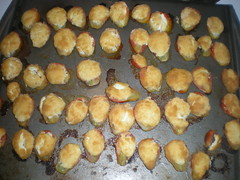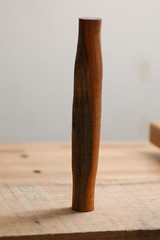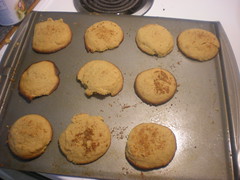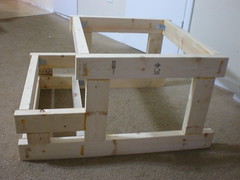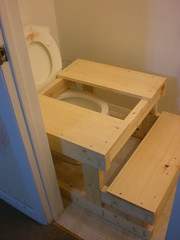It has been a while since I made cookies. The last time I made cookies at home, I used Nestle's frozen cookie dough. This time I decided to make cookies from scratch. Ended up with 16 cookies. By the time I was able to get hold of a camera, 3 cookies were already gone.
They turned out to be a little on the soft side as I was generous with heavy cream. Maybe next time, I will try to make them a litte more chewy.
Prep Time - 30 min
Cook Time - 30 min
8 servings
Ingredients1¼ cups of flour
½ teaspoon salt
1 teaspoon baking powder
½ cup butter
1/2 cup peanut butter
½ cup sugar
½ cup brown sugar
½ teaspoon vanilla
1 egg
1 cup heavy cream
Directions1. Combine flour, salt, & baking powder. Sift.
2. In a separate bowl, combine peanut butter, brown sugar, sugar, and butter.
3. And cream until fluffy.
4. Beat in egg and vanilla.
5. Blend in flour mixture to the peanut butter mixture.
6. Your batter should be stiff enough that when you stick your spoon in vertically, the spoon will stay in place and not fall over (if it is too runny, add a bit more flour). At this point, I usually refrigerate my dough for about 20-30 minutes. For me, this dough is easier to work with when it’s chilled.
7. After chilling (if you chose to do so), roll dough into 1 inch balls and place on greased baking sheet (I line mine with parchment paper instead). Press fork into dough to make an impression.
8. Bake at 375 degrees Fahrenheit for 10-12 minutes, or until bottom edges turn light brown. Remove from oven and place sheet on wire rack/stove top. Allow the peanut butter cookies to sit on the baking sheet for 2 - 3 minutes (or else they will crumble). Then, transfer the peanut butter cookies from baking sheet to plate. Enjoy!


